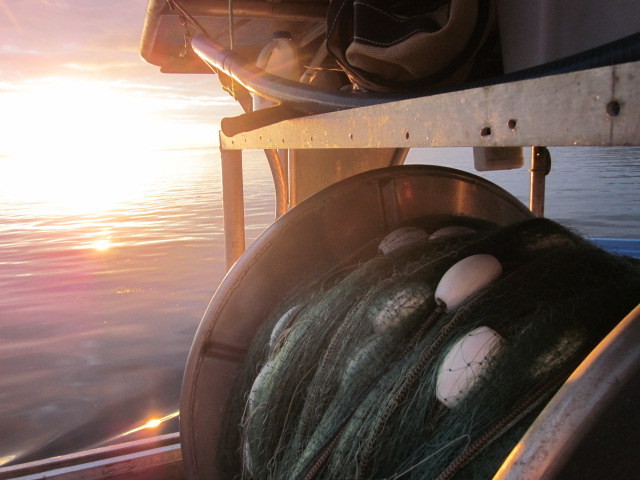
Alaska’s Board of Fisheries in January approved a change for commercial seine and gillnet fishing at a new hatchery release site south of Sitka. The change is meant to allow net fishing fleets to take advantage of unexpectedly strong returns of chum salmon at Crawfish Inlet.
In 2018, the Sitka-based Northern Southeast Regional Aquaculture Association, or NSRAA had its second year of returns to the remote fjord on Baranof Island. The returns were much bigger than expected, coming in just under three and a half million fish.
Max Worhatch of Petersburg, executive director of United Southeast Alaska Gillnetters, lobbied the board to allow that gear group to fish the area.
“We recognize that we’re not going to get in there any time soon,” Worhatch told the board.” And this is just a tool for NSRAA to help keep, to help them meet the conditions of that permit. Because it is a conditional permit. We gotta keep it cleaned up. I was there at the (Regional Planning Team) when they did this and they were adamant about keeping it cleaned up and I think that gillnets are an important tool that they can use, maybe in less big production years, that we can fish on smaller amounts of fish.”
The Regional Planning Team makes recommendations on hatchery permitting. Managers seek to harvest as close to 100 percent of a hatchery return as possible to keep those fish from spawning with wild stocks.
The troll fleet fished in Crawfish in 2018, seiners too, but not gillnetters. Troll gear was already allowed in the terminal harvest area there and it was set as a troll priority fishery by the NSRAA board the last two years. While seining was not mentioned in the management plan for Crawfish, it is a legal gear type in those waters. And openings were held for seiners to deal with the huge returns.
NSRAA general manager Steve Reifenstuhl told the board he thought the change had already been made with a proposal last year. But he explained allowing net fishing was not allocation issue at Crawfish.
“In terms of the allocation we don’t need to put gillnet in there,” Reifenstuhl said. “We really need to put seine in there if we’re going to keep it cleaned up. If there’s a run of two million or more, the only way to have it totally cleaned up is going to be with seine and it’s really about providing an additional opportunity for gillnet if we have these inordinately large runs.”
As far as divvying up the region’s returns of hatchery fish, the board in 1994 approved an allocation plan. That sets targets for the three gear groups. For the seine fleet it’s 44-49 percent of the value of the Southeast’s hatchery fish catch. The target is 27-32 percent for trollers and 24-29 percent for gillnetters . Averaging catches over the past two decades, the seine fleet has been pretty close to its target. The troll fleet historically is below its allocation and the gillnet fleet consistently above.
Petersburg’s advisory committee voted against the change over concerns with the allocation of the hatchery catch. Written public comments from gillnetters all supported opening Crawfish to that fleet. The Alaska Trollers Association also was in support of allowing net fishing there.
The proposal was to put in regulation that both seining and gillnetting are allowed in the terminal harvest area along with trolling. The proposal passed 6-0 with John Jensen of Petersburg absent from that vote. The NSRAA board still needs to vote on the change as well. That board meets in early March in Sitka.
What does an expected return of nearly 3.5 million fish look like? Check out this YouTube video posted during seine fishing there last August.











